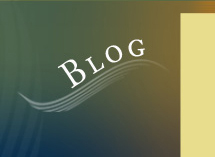Bringing Different Voices To The Table
This morning I was leafing through the annual report of the Wilderness Society (i am a card carrying member), and I was struck by President William Meadows op-ed called "It Takes A Big Table". In it he makes the case for bringing together the widest possible range of stakeholders in the decisionmaking process and implementation of conserving wild places: "The list includes ranchers, local business leaders, union representatives, hunters, and religious leaders, among others. Demographic groups that have been underrepresented include Latinos, African-Americans, and tribes, to name three."
Meadows goes on to say: "In a time of deep partisan divides on so many issues, the protection of our natural legacy--redrock canyonlands, forests of giant Sequoias, deep blue lakes, and so much more--can unite us. Republican and Democrat, young and old, black and white, birdwatcher and off-road vehicle rider. All of us have a stake in taking care of this inheritance and in making sure that our great-grandchildren will have the same chance to benefit from these special places."
A few things jumped out to me in reading these lines. First was how conservation organizations and government agencies are recognizing more and more just how crucial it is to forge connections among unlikely allies in order to address shared concerns in a sustainable way. I appreciated his take on how the land and our connection to it is something that we all share, so that conservation of special places is an act that we can all come together on. But more important to me was the notion that we all actually have a stake in conservation. That no matter who you are or where you live, your way of life is intimately bound up with the health of natural resources (clean air & water, working landscapes, climate) around you.
What also resonated for me in reading these lines is the power of place and how it can unite people across ideological, cultural, economic, or geographic divides. The idea of wild places as our "commons", a place for people from all walks of life to gather, enjoy, and experience. And that this commons/common ground is our natural capital to invest in for the public benefit.
Which makes me wonder: how do you bring all these different voices to the table and engage them in a meaningful way to share perspectives, raise concerns, and collaborate in addressing issues?
My current answer: through storytelling. Telling and listening to stories helps us make sense of the world and deepen our relationships with others. We tell and listen to stories to share information, make meaning of experiences, and understand change. It is the age old means to transmit history, culture, and experiences.
Stories can take us directly to a specific moment or particular experience. They can transport listeners to places they might never otherwise go. Storytelling has the power to draw people into an issue, help them understand, make them care about it and motivate them to get involved.
And it is something we all do and know how to do. We are all storytellers and we all have stories to tell.
That's why I am so involved in the regional media project Saving The Sierra: Voices of Conservation In Action. In many ways it is a big, expanding table open to everyone to come, sit, tell a conservation story, listen to others, and engage in figuring out what we want to do and how to save the places we love in the magnificent Sierra Nevada.














Post new comment